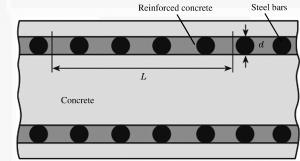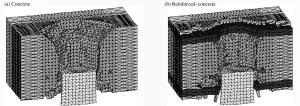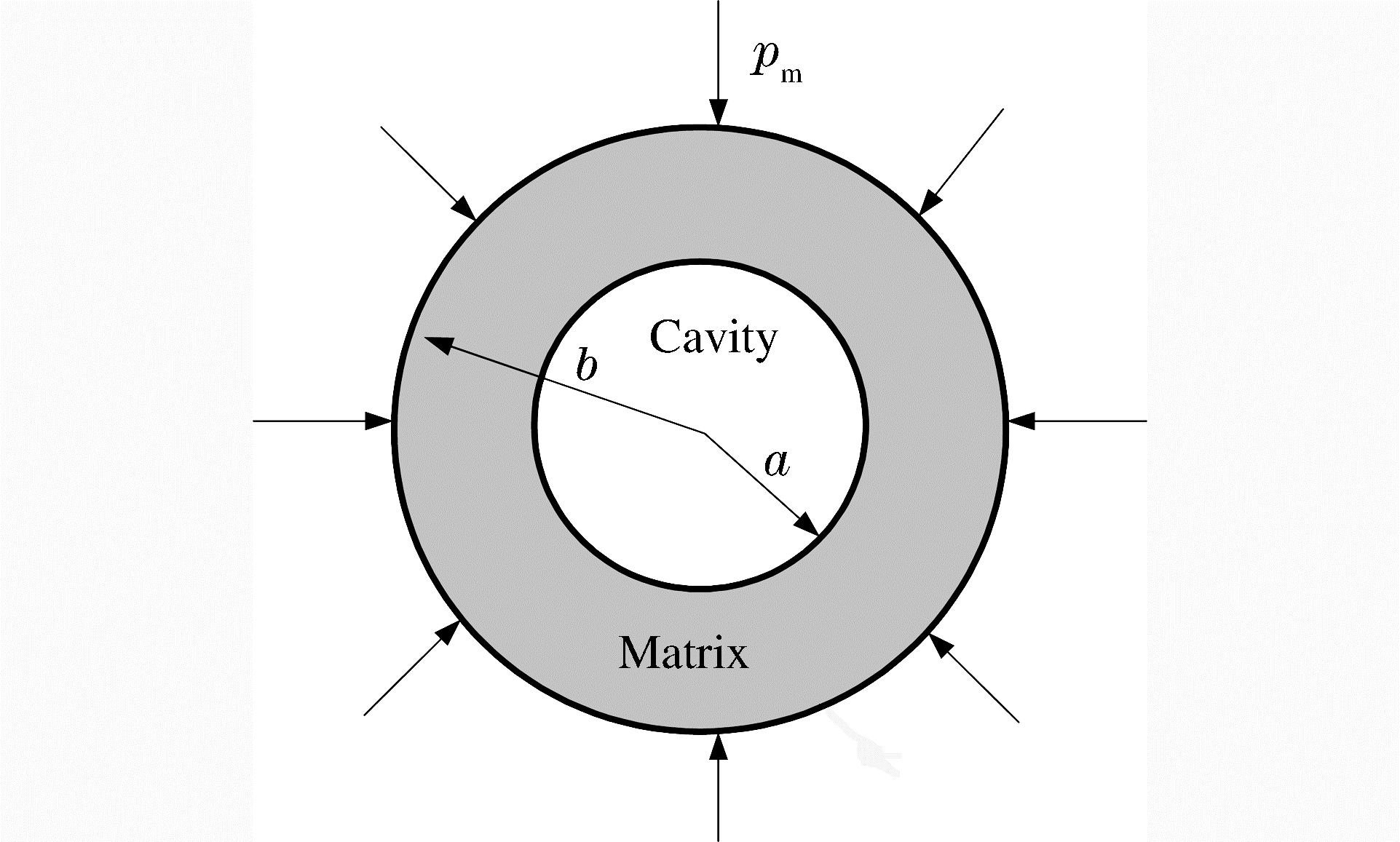| [1] |
Fomin V M, Gulidov A I, Sapozhnikov G A, et al.High-speed interaction of solids[M].Novosibirsk:Sib.Otd.Ross.Akad.Nauk, 1999.
|
| [2] |
Belov N N, Demidov V N, Efremova L V, et al.Computer modeling of the dynamics of high-velocity impact and accompanying physical phenomena[J].Russian Physics Journal, 1992, 35(8):690-723. doi: 10.1007/BF00568741
|
| [3] |
Николаевского В Н.Высокоскоростные ударные явления[M].Москва:Мир, 1973.
|
| [4] |
Григоряна С С.Динамика удара[M].Москва:Мир, 1985.
|
| [5] |
Isaev A L.Effect of concrete reinforcement on the results of dynamic loading by penetrating bodies[C]//Proceedings of the 3th International Conference of Khariton Scientific Readings in Extremal State of Material Detonation Shock Waves.Sarov, Russia, 2002: 150-156
|
| [6] |
Wilkins M L.Computational methods in fluid dynamics[M].Moscow:Mir, 1967:212-263.
|
| [7] |
朱建士, 胡晓棉, 王裴, 等.爆炸与冲击动力学若干问题研究进展[J].力学进展, 2010, 40(4):400-423. http://www.wanfangdata.com.cn/details/detail.do?_type=perio&id=QK201001612496Zhu Jianshi, Hu Xiaomian, Wang Pei, et al.A review on research progress in explosion and mechanics and impact dynamics[J].Advances in Mechanics, 2010, 40(4):400-423. http://www.wanfangdata.com.cn/details/detail.do?_type=perio&id=QK201001612496
|
| [8] |
Holmquist T J, Johnson G R.A computational constitutive model for concrete subjected to large strains, high strain rates and high pressure[C]//Proceedings of the 14th International Symposium on Ballistics.Quebec, Canada, 1993: 591-600. https://www.researchgate.net/publication/241438121_A_Computational_Constitutive_Model_for_Glass_Subjected_to_Large_Strains_High_Strain_Rates_and_High_Pressures
|
| [9] |
Herrmann W.Constitutive equation for the dynamic compaction of ductile porous materials[J].Journal of Applied Physics, 1969, 40(6):2490-2499. doi: 10.1063/1.1658021
|
| [10] |
Tu Zhenguo, Lu Yong.Evaluation of typical concrete material models used in hydrocodes for high dynamic response simulations[J].International Journal of Impact Engineering, 2009, 36(1):132-146. doi: 10.1016/j.ijimpeng.2007.12.010
|
| [11] |
Carroll M M, Holt A C.Static and dynamic porecollapse relations for ductile porous materials[J].Journal of Applied Physics, 1972, 43(4):1626-1636. doi: 10.1063/1.1661372
|
| [12] |
Bhatt J J, Carroll M M, Schatz J F.A spherical model calculation for volumetric response of porous rocks[J].Journal of Applied Mechanics, 1975, 42(2):363-368. doi: 10.1115/1.3423582
|
| [13] |
Belov N N, Dzyuba P V, Kabantsev O V, et al.Mathematical modeling of dynamic fracture processes in concrete[J].Mechanics of Solids, 2008, 43(2):269-276. doi: 10.3103/S0025654408020131
|
| [14] |
Belov N N, Kabantsev O V, Konyaev A A, et al.Analysis of reinforced-concrete strength under impact loading[J].Journal of Applied Mechanics and Technical Physics, 2006, 47(6):911-917. doi: 10.1007/s10808-006-0132-y
|
| [15] |
Belov N N, Yugov N T, Kopanitsa D G, et al.Calculation of the strength of reinforced concrete columns under repeated longitudinal impact[J].Journal of Applied Mechanics and Technical Physics, 2008, 49(1):148-155. doi: 10.1007/s10808-008-0022-6
|
| [16] |
Lynn S, Donald R C, Donald A S.Computational models for ductile and brittle fracture[J].Journal of Applied Physics, 1976, 47(11):4814-4826. doi: 10.1063/1.322523
|
| [17] |
Johnson J N.Dynamic fracture and spallation in ductile solids[J].Journal of Applied Physics, 1981, 52(4):2812-2825. doi: 10.1063/1.329011
|
| [18] |
Afanas'eva S A, Belov N N, Yugov N T.The penetration of cylindrical strikes through obstacles made of concrete and sandy ground[J].Doklady Physics, 2002, 47(12):876-879. doi: 10.1134/1.1536220
|
| [19] |
Belov N N, Demidov V N, Efremova L V, et al.Computer modeling of the dynamics of high-velocity impact and accompanying physical phenomena[J].Russian Physics Journal, 1992, 35(8):690-723. doi: 10.1007/BF00568741
|
| [20] |
Afanas'eva S A, Belov N N, Kopanitsa D G, et al.Failure of concrete and reinforced-concrete plates under high-speed shock and explosion[J].Doklady Physics, 2005, 50(3):132-135. doi: 10.1134/1.1897986
|
| [21] |
Belov N N, Yugov N T, Kopanitsa D G, et al.Stress analysis of concrete and reinforced-concrete slab structures under a high-velocity impact[J].Journal of Applied Mechanics and Technical Physics, 2005, 46(3):444-451. doi: 10.1007/s10808-005-0095-4
|
| [22] |
王政, 倪玉山, 曹菊珍, 等.冲击载荷下混凝土动态力学性能研究进展[J].爆炸与冲击, 2005, 25(6):519-527. doi: 10.3321/j.issn:1001-1455.2005.06.007Wang Zheng, Ni Yushan, Cao Juzhen, et al.Recent advances of dynamic mechanical behavior of concrete under impact loading[J].Explosion and Shock Waves, 2005, 25(6):519-527. doi: 10.3321/j.issn:1001-1455.2005.06.007
|
| [23] |
陈书宇.一种混凝土损伤模型和数值方法[J].爆炸与冲击, 1998, 18(4):349-357. http://www.bzycj.cn/CN/abstract/abstract10428.shtmlChen Shuyu.A concrete damage model and numerical methods[J].Explosion and Shock Waves, 1998, 18(4):349-357. http://www.bzycj.cn/CN/abstract/abstract10428.shtml
|
| [24] |
过镇海, 王传志.多轴应力下混凝土的强度和破坏准则研究[J].土木工程学报, 1991, 24(3):1-14. http://www.wanfangdata.com.cn/details/detail.do?_type=perio&id=QK000003121429Guo Zhenhai, Wang Chuanzhi.Investigation of strength and failure criterion of concrete under multiaxial stresses[J].China Civil Engineering Journal, 1991, 24(3):1-14. http://www.wanfangdata.com.cn/details/detail.do?_type=perio&id=QK000003121429
|
| [25] |
胡时胜, 王道荣.冲击载荷下混凝土材料的动态本构关系[J].爆炸与冲击, 2002, 22(3):242-246. doi: 10.3321/j.issn:1001-1455.2002.03.009Hu Shisheng, Wang Daorong.Dynamic constitutive relation of concrete under impact[J].Explosion and Shock Waves, 2002, 22(3):242-246. doi: 10.3321/j.issn:1001-1455.2002.03.009
|
| [26] |
宋伟, 袁勇.单调轴向荷载下钢筋混凝土拉伸损伤本构研究[J].工程力学, 2005, 22(6):142-147. doi: 10.3969/j.issn.1000-4750.2005.06.024Song Wei, Yuan Yong.Damaging constitutive law of reinforced concrete specimens under monotonic uniaxial tensile load[J].Engineering Mechanics, 2005, 22(6):142-147. doi: 10.3969/j.issn.1000-4750.2005.06.024
|
| [27] |
商霖, 宁建国, 孙远翔.强冲击载荷作用下钢筋混凝土本构关系的研究[J].固体力学学报, 2005, 26(2):175-181. doi: 10.3969/j.issn.0254-7805.2005.02.009Shang Lin, Ning Jianguo, Sun Yuanxiang.The constitutive relationship of reinforced concrete subjected to shock loading[J].Chinese Journal of Solid Mechanics, 2005, 26(2):175-181. doi: 10.3969/j.issn.0254-7805.2005.02.009
|
| [28] |
路德春, 杜修力, 闫静茹, 等.混凝土材料三维弹塑性本构模型[J].中国科学:技术科学, 2014(8):288-291. http://d.old.wanfangdata.com.cn/Conference/7729570Lu Dechun, Du Xiuli, Yan Jingru, et al.A three-dimensional elastoplastic constitutive model for concrete[J].Scientia Sinica Techologica, 2014(8):288-291. http://d.old.wanfangdata.com.cn/Conference/7729570
|
| [29] |
Grady D E, Kipp M E.Continuum modeling of explosive fracture in oil shale[J].International Journal of Rock Mechanics and Mining Science, 1980, 17(6):147-157. http://www.sciencedirect.com/science/article/pii/0148906280913613
|
| [30] |
Forrestal M J, Luk V K, Watts H A.Penetration of reinforced concrete with ogive-nose penetrators[J].International Journal of Solids and Structures, 1988, 24(1):77-87. doi: 10.1016/0020-7683(88)90100-X
|
| [31] |
王政, 倪玉山, 曹菊珍, 等.冲击载荷下混凝土本构模型构建研究[J].高压物理学报, 2006, 26(4):337-344. doi: 10.3969/j.issn.1000-5773.2006.04.001Wang Zheng, Ni Yushan, Cao Juzhen, et al.Building of a constitutive model for concrete under dynamic impact[J].Chinese Journal of High Pressure Physics, 2006, 26(4):337-344. doi: 10.3969/j.issn.1000-5773.2006.04.001
|
| [32] |
Heider N, Hiermaier S.Numerical simulation of tandem warheads[C]//Proceedings of the 19th International Symposium on Ballistics.Interlaken, Switzerland: IBS 2001 Symposium Office, 2001: 1493-1499.
|
| [33] |
Malvar L J, Crawford J E, Wesevich J W, et al.A plasticity concrete material model for DYNA3D[J].International Journal of Impact Engineering, 1997, 19(9):847-873. http://www.wanfangdata.com.cn/details/detail.do?_type=perio&id=CC025950745
|
| [34] |
Polanco-loria M, Hopperstad O S, Brvik T, et al.Numerical predictions of ballistic limits for concrete slabs using a modified version of the HJC concrete model[J].International Journal of Impact Engineering, 2008, 35(5):290-303. doi: 10.1016/j.ijimpeng.2007.03.001
|
| [35] |
Taylor L M, Chen E P, Kuszmaul J S.Microcrack-induced damage accumulation in brittle rock under dynamic loading[J].Journal of Computer Methods in Applied Mechanics and Engineering, 1986, 55(3):301-320. doi: 10.1016/0045-7825(86)90057-5
|
| [36] |
王丽颖, 蒋建伟, 门建兵.混凝土穿孔过程的数值模拟[C]//计算爆炸力学理论、方法及工程应用暨第二届全国计算爆炸力学会议录.北京理工大学出版社, 2002: 228-234.
|
| [37] |
武海军, 黄风雷, 金乾坤, 等.弹体贯穿钢筋混凝土数值模拟[J].爆炸与冲击, 2003, 23(6):545-550. doi: 10.3321/j.issn:1001-1455.2003.06.011Wu Haijun, Huang Fenglei, Jin Qiankun, et al.Numerical simulation on perforation of reinforced concrete targets[J].Explosion and Shock Waves, 2003, 23(6):545-550. doi: 10.3321/j.issn:1001-1455.2003.06.011
|
| [38] |
金乾坤.混凝土动态损伤与失效模型[J].兵工学报, 2006, 27(1):10-14. http://d.old.wanfangdata.com.cn/Periodical/bgxb200601003Jin Qiankun.Dynamic damage and failure model for concrete materials[J].Acta Armamentarii, 2006, 27(1):10-14. http://d.old.wanfangdata.com.cn/Periodical/bgxb200601003
|
| [39] |
马爱娥, 黄风雷, 初哲, 等.弹体攻角侵彻混凝土数值模拟[J].爆炸与冲击, 2008, 28(1):33-37. doi: 10.3321/j.issn:1001-1455.2008.01.006Ma Aie, Huang Fenglei, Chu Zhe, et al.Numerical simulation on yawed penetration into concrete[J].Explosion and Shock Waves, 2008, 28(1):33-37. doi: 10.3321/j.issn:1001-1455.2008.01.006
|
| [40] |
魏强, 蒋建伟, 黄西成, 等.混凝土损伤组合模型[J].固体力学学报, 2011, 32(S1):416-421. http://d.old.wanfangdata.com.cn/Conference/7589581Wei Qiang, Jiang Jianwei, Huang Xicheng, et al.Combined damage model of concrete[J].Chinese Journal of Solid Mechanics, 2011, 32(S1):416-421. http://d.old.wanfangdata.com.cn/Conference/7589581
|
| [41] |
魏强, 黄西成, 颜怡霞, 等.混凝土动态损伤模型[C]//第十届全国冲击动力学学术会议论文集, 2011, 1-7. http://cpfd.cnki.com.cn/Article/CPFDTOTAL-AGLU201107002130.htm
|
| [42] |
钱七虎, 王明洋.高等防护结构计算理论[M].南京:江苏科学技术出版社, 2009.
|
| [43] |
Li Q M, Chen X W.Dimensionless formulae for penetration depth of concrete target impacted by a non-deformable projectile[J].International Journal of Impact Engineering, 2003, 28(1):93-116. doi: 10.1016/S0734-743X(02)00037-4
|
| [44] |
Li Q M, Reid S R, Wen H M, et al.Local impact effects of hard missiles on concrete targets[J].International Journal of Impact Engineering, 2005, 32(1):224-284. http://www.wanfangdata.com.cn/details/detail.do?_type=perio&id=f836952d7e21bc3f5f0eb712e6968392
|
| [45] |
Jankowiak T, Lodygowski T.Handbook of damage mechanics[M].New York:Springer Press, 2014.
|
| [46] |
Belov N N, Yugov N T, Afanas'eva S A, et al.Mathematical modeling of deformation and fracture for bony tissues in the case of high-speed impact[J].Doklady Physics, 2011, 56(3):190-193. doi: 10.1134/S1028335811030104
|
| [47] |
Belov N N, Yugov N T, Afanas'eva S A, et al.Strength of a reinforced-concrete commercial object on high-velocity impact with a model projectile[J].Journal of Engineering Physics and Thermophysics, 2014, 87(2):420-426. doi: 10.1007/s10891-014-1028-y
|







 下载:
下载:







